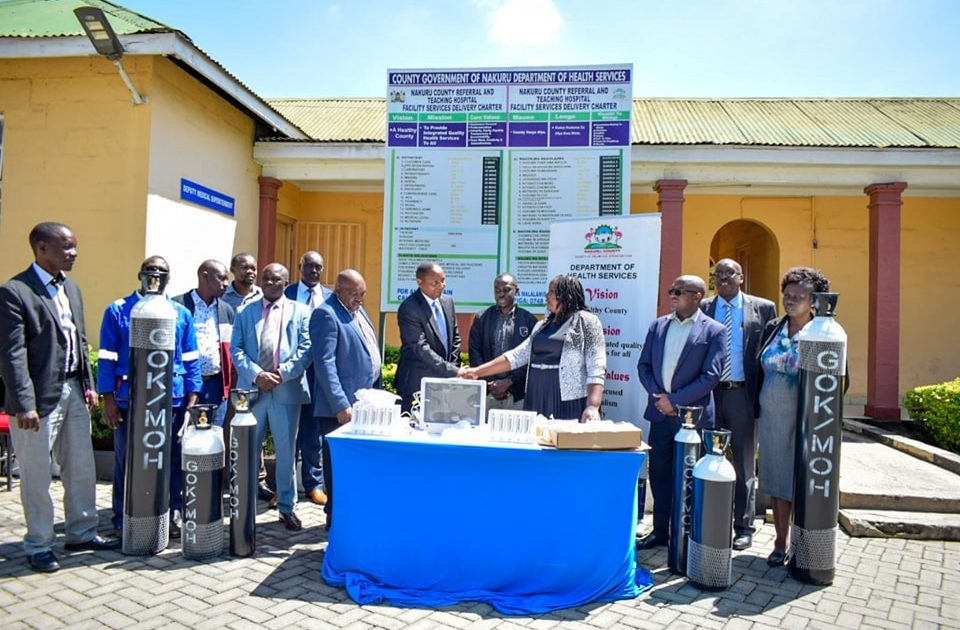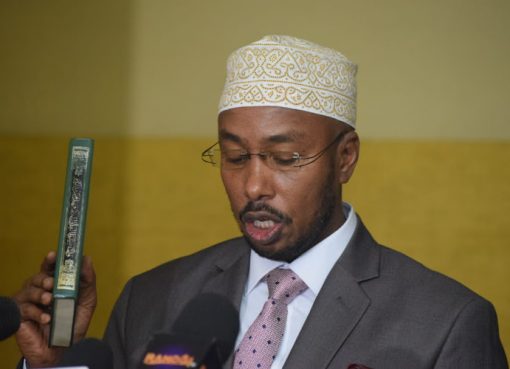Twelve Health centres in Nakuru County have received oxygen supplying equipment in the latest collaboration between the national government, Amref Health Africa and the Global Fund.
County Executive for Health Ms Jaqcline Osoro said the gesture was aimed at ensuring the realization of Primary Healthcare Coverage (PHC) through boosting access to quality and affordable healthcare services and will see the devolved unit receive 695 new oxygen cylinders, oxygen splitters, patient monitors as well as oxygen piping and manifold which will be distributed to the 12 health facilities spread across the county.
Ms Osoro said every equipment given shall be put into good use to improve service delivery so that every patient that visits the health facilities could get better in addition to ensuring that they access medical oxygen on time.
She observed that an effective oxygen ecosystem involves the provision of a consistent and uninterrupted supply of medical oxygen to healthcare facilities through production, storage, and delivery to the bedside.
The initiative Ms Osoro added was a timely example of what it means to build a resilient and sustainable health system.
The event was graced by Chief Officer for Medical Services Dr John Murima, Dr Sospeter Gitonga from the Ministry of Health and the Nakuru County Referral and Teaching Hospital Medical Superintendent Dr James Waweru.
Ms Osoro said the consignment will boost the reliable supply, storage, and distribution of medical oxygen adding that the equipment promise a better future for people needing oxygen therapy, from children with pneumonia to adults with severe tuberculosis and other respiratory conditions like acute asthma attacks.
The investment by the national government, Amref Health Africa and the Global Fund includes the provision of 22 Oxygen Production Plants, 14 oxygen bulk tanks for higher-level facilities, piping, and bedside installations for 320 health facilities, all aimed at last-mile access to medical oxygen, a lifesaving commodity.
The initiative is expected to benefit Kenyans who could not previously receive oxygen at their local primary care facilities due to a shortage of oxygen cylinders or lack of oxygen, as witnessed during the Covid-19 pandemic. During the pandemic, the cylinders were either in short supply or required exorbitant leasing or hiring fees from oxygen manufacturers before refilling and supply.
The new initiative eliminates the barrier of cylinder deposits, which the facilities had to incur to access oxygen. The initiative will also maximize the use of oxygen through innovative ways of dispensing. For instance, attaching multiple cylinders to supply a hospital through a piping system saves oxygen and allows for more patients to be treated on a smaller budget.
Last month, Kenya made a historic milestone in the journey towards Universal Health Coverage when President William Ruto inaugurated a mega initiative by Amref Health Africa, the largest health development non-governmental organization in Africa.
The initiative, financed through the support of the Global Fund for HIV, TB, and Malaria, provided Sh20,971,500,000 (USD$ 155 million) as an emergency investment towards the Covid–19 Response Mechanism (C19RM) to Kenya, out of which Sh5,547,300,000 (USD$ 41 million) went into strengthening the supply system for medical oxygen.
Under the C-19RM project, Amref Health Africa, in collaboration with the Ministry of Health, procured 20,620 medical oxygen cylinders worth nearly Sh1 billion to strengthen the Oxygen ecosystem across the 47 counties.
The World Health Organization acknowledges that oxygen is an essential medicine, used to care for patients at all levels of the healthcare system. This includes surgery, trauma, heart failure, asthma, pneumonia and maternal and child care.
“Pneumonia alone accounts for 800,000 deaths per year with estimates indicating that between 20 to 40 per cent of these deaths could be prevented with the availability of oxygen therapy,” WHO says.
The demand for oxygen has further been accelerated by the Covid-19 pandemic that has seen more patients admitted in health facilities. WHO estimates that the need has increased to 1.1 million cylinders in low to middle-income countries.
By Esther Mwangi




